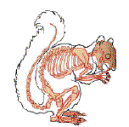
Lee Marvin and Sissy Spacek fleeing the metal teeth of a combine in Prime Cut (dir. Michael Ritchie, 1972).

Angel Tompkins (no angel in this flick).

Gene Hackman eating a plate of guts ("I like 'em!").
Michael Ritchie (1938-2001) directed a handful of pretty good but not breathtaking movies in his lifetime (Downhill Racer, The Candidate, The Bad News Bears, Fletch), and some bizarrely misconceived ones (The Island, The Survivors, The Golden Child). Some, like Semi-Tough, The Couch Trip, and Cops and Robbersons, seem to belong to the latter category, but may yield hidden virtues to viewers in a future generation. Hell, maybe those other movies will too.
Prime Cut may be the closest thing he has to a neglected masterpiece. I mean, it's not, really. It's uneven in tone, and doesn't really have a strong narrative arc (OK, I confess, I've never understood exactly what a narrative arc is, but it seems like that might be what's missing here). What it does have is Lee Marvin badassing it up in top form, wonderful cinematography by Guy Polito, an exuberant Lalo Schifrin score, and some memorable set pieces--most notably the one in which Lee Marvin and Sissy Spacek are chased by a big red combine across a wheat field (possibly inspired by the cropduster scene in North by Northwest).
Sissy Spacek is used at times as a pornographic prop, as she would be again a few years later by Brian De Palma in Carrie. Lee Marvin, as the "good" mob guy sent into town to collect money owed by the "bad" mob guy, gallantly rescues her from the scumbags who are trying to sell her into prostitution: she and other girls raised for this purpose at an illicit orphanage are drugged and shoved nude into cattle stalls at a big flesh auction. But shortly thereafter, he shows her off in a transparent gown at the fancy restaurant of the Kansas City hotel he is staying at. After dinner, she regales him with heartbreaking stories of the amateur lesbianism she and her best friend were driven to in their manless teenage days at the orphanage. So you see what we're dealing with here. As in other of Ritchie's films, you can't tell if it's being played straight or for laughs, and either way it's creepy.
Gene Hackman plays "Mary Ann," the head of Mary Ann's Meat Packing, which is both a legitimate company and a front for the aforementioned slavery ring. Hackman hams it up (oh, there's a pun), leering and gloating and swaggering. He and his brother Weenie (Gregory Walcott) wrassle like five-year-olds, whaling the crap out of each other while the company accountants try to do their work: it's right up there with the kitchen fight scene in Gummo.
Location is key to much of the film's vividness: Chicago movie theater marquees, a county fair, enormous fields of sunflowers. Most of all, I love the shots of early seventies Kansas City. Near the beginning of the movie, as Marvin's limo rolls into town, one of his helpers (Howard Platt) looks out the window at a series of tableaux culminating in a big nuts and bolts factory, and says in a bemused Irish voice, "Jesus, what a bare-ass town."



1 comment:
Pretty good review. I go along with all you've said.
If Hackman had also been a mean bad-ass type rather than a clown, the film might have played better. As it is, it is pretty good. And great to see Marvin playing a role he is so good at in colour (The killers, Point Blank).
Post a Comment